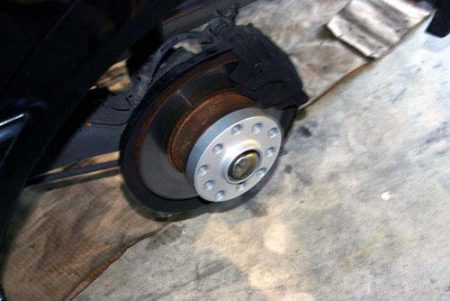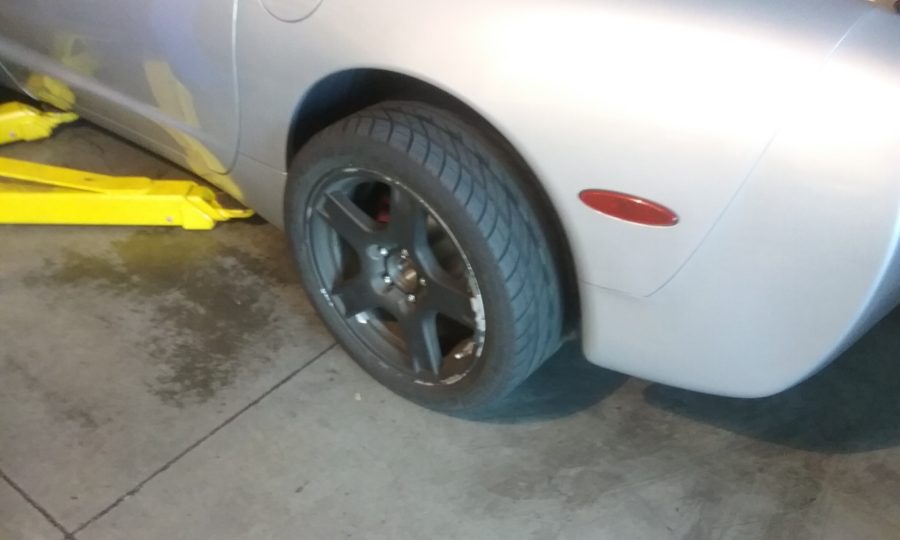If you go to a tuner car show, drift event, or even most track days, you’re bound to find some similarities in the cars. One of the major similarities is how tight their fitment is, meaning their clearance between their fenders and their tires. Generally, the smaller you can get that gap, the better. That’s where wheel spacers come into play, when your rims don’t have the correct offset on them, a spacer can simulate that. Are these spacers safe though?
When using the correct type of spacers, and installing them properly, spacers are very safe. The issues some people report with spacers are generally caused by improper installation or simply using the wrong spacer.
How can you know which spacer to use? What is the proper method of installing a spacer? We’ll go over these later in the article, and if you don’t want to snap your studs, stay tuned!
What Are The Types Of Wheel Spacers?
There are two distinctions for different kinds of wheel spacers, whether they are hub-centric or floating, and whether they are slip-on or bolt-on spacers. This gives us four total kinds, a hub-centric slip-on, hub-centric bolt-on, floating slip-on, and floating bolt-on. But what do those mean?
What Are Hub-Centric Spacers
 These spacers are custom-machined for your exact situation, made to lock both into your wheel and your hub. This locking is done via an elevated inner race, so the load from the wheel is transferred to the hub without excess stress being applied to the wheel studs. This also makes the wheel assembly much easier to take off and put back on. This design is the safest and highest-quality by a landslide, with the only downside being a lack of versatility. If you’re planning on owning your car for more than a week, though, I’d wholly recommend getting these.
These spacers are custom-machined for your exact situation, made to lock both into your wheel and your hub. This locking is done via an elevated inner race, so the load from the wheel is transferred to the hub without excess stress being applied to the wheel studs. This also makes the wheel assembly much easier to take off and put back on. This design is the safest and highest-quality by a landslide, with the only downside being a lack of versatility. If you’re planning on owning your car for more than a week, though, I’d wholly recommend getting these.
What Are Floating Spacers
 As the alternate choice to hub-centric spacers, these are generally one-size-fits-all type spacers, where they fit a variety of bolt circles. While this may sound like a good thing, this puts an incredible stress on your studs. The studs on your car were designed to take the load of a wheel locked on the hub itself. Adding a floating spacer into the mix exponentially increases the force applied, and you run the risk of breaking something. These are only recommended in sizes under 5mm, for extreme fine-tuning.
As the alternate choice to hub-centric spacers, these are generally one-size-fits-all type spacers, where they fit a variety of bolt circles. While this may sound like a good thing, this puts an incredible stress on your studs. The studs on your car were designed to take the load of a wheel locked on the hub itself. Adding a floating spacer into the mix exponentially increases the force applied, and you run the risk of breaking something. These are only recommended in sizes under 5mm, for extreme fine-tuning.
What Are Slip-on Spacers

As with the floating spacers, these are only recommend for 5mm and under, for extreme fine-tuning. These simply slip on over your existing studs, and rely on them to take the load of your now-extended wheelbase. These provide no support, doing the exact opposite and taking said support away. These are much cheaper than bolt-on spacers, but you’ll make up the difference in repairs if you’re trying to space too much.
What Are Bolt-on Spacers
 The alternative of slip-on spacers, bolt-ons allow you to run a much higher offset safely. This is accomplished in conjunction with specialized rims that have divots in their rear (heh) for the stock studs to sit. The stock studs slide into your spacer, and you use the lug nuts to tighten the spacer to the hub. Next, using the bolts on the spacer, you attach the wheel, using the lugs that were (probably) included with the spacer. This provides a rigid connection between your hub and spacer, and your spacer and wheel.
The alternative of slip-on spacers, bolt-ons allow you to run a much higher offset safely. This is accomplished in conjunction with specialized rims that have divots in their rear (heh) for the stock studs to sit. The stock studs slide into your spacer, and you use the lug nuts to tighten the spacer to the hub. Next, using the bolts on the spacer, you attach the wheel, using the lugs that were (probably) included with the spacer. This provides a rigid connection between your hub and spacer, and your spacer and wheel.
What Type Of Spacer Should I Use?
If you’re going to own your car for more than a week and want an offset less than 5mm, a hub-centric slip-on spacer will work for you. If you’ll own the car for awhile and want an offset higher than 5mm, a hub-centric slip-on spacer is your animal. There is no legitimate reason to run a floating spacer, save for versatility. If you’re going to be swapping one set of spacers between cars however, you have bigger problems.
Why Should I Use Spacers At All?
 Here’s the trick, you don’t have to! When you order wheels from any professional company, odds are they’ll have an option for offset in the ordering process. If you just measure what your car needs, then order the correct rims, you won’t need spacers. This will end up being the cheaper option as opposed to getting new rims, then getting spacers to make up the difference. Just make sure you measure properly, as failing to do so could result in lots of rubbing.
Here’s the trick, you don’t have to! When you order wheels from any professional company, odds are they’ll have an option for offset in the ordering process. If you just measure what your car needs, then order the correct rims, you won’t need spacers. This will end up being the cheaper option as opposed to getting new rims, then getting spacers to make up the difference. Just make sure you measure properly, as failing to do so could result in lots of rubbing.
If you’re buying second-hand rims, however, it’s quite likely your car’s fitment won’t be identical to the original owner’s, thus warranting wheel spacers. The safer alternative to this issue is to just buy new rims, but lets be real, we’re car enthusiasts. We don’t always have the money for brand-new wheels! That’s the blessing and curse of the car scene, we’re too poor to get hooked on drugs. When it comes to spacers, however, don’t skimp with cheap Wish.com products. You’ll regret it in the long run, just get the safe and quality option.

